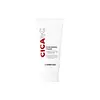What's inside
What's inside
 Key Ingredients
Key Ingredients

 Benefits
Benefits

 Concerns
Concerns

 Ingredients Side-by-side
Ingredients Side-by-side

Zea Mays Starch
AbsorbentSodium Cocoyl Isethionate
CleansingSodium Lauroyl Glutamate
Diglycerin
HumectantAllantoin
Skin ConditioningMaltodextrin
AbsorbentPapain
Skin ConditioningCI 77004
Cosmetic ColorantSodium Bicarbonate
AbrasiveCitric Acid
BufferingSodium Polyacrylate
AbsorbentWater
Skin ConditioningOryza Sativa Powder
Oryza Sativa Lees Extract
Skin ConditioningOryza Sativa Bran Water
Masking1,2-Hexanediol
Skin ConditioningOryza Sativa Extract
AbsorbentButylene Glycol
HumectantDipropylene Glycol
HumectantHydrolyzed Rice Protein
Skin ConditioningOryza Sativa Seed Protein
AntioxidantCeramide NP
Skin ConditioningAscorbic Acid
AntioxidantAlpha-Arbutin
AntioxidantProtease
ExfoliatingCaprylyl Glycol
EmollientGlucose
HumectantGlycerin
HumectantTartaric Acid
BufferingLactic Acid
BufferingZea Mays Starch, Sodium Cocoyl Isethionate, Sodium Lauroyl Glutamate, Diglycerin, Allantoin, Maltodextrin, Papain, CI 77004, Sodium Bicarbonate, Citric Acid, Sodium Polyacrylate, Water, Oryza Sativa Powder, Oryza Sativa Lees Extract, Oryza Sativa Bran Water, 1,2-Hexanediol, Oryza Sativa Extract, Butylene Glycol, Dipropylene Glycol, Hydrolyzed Rice Protein, Oryza Sativa Seed Protein, Ceramide NP, Ascorbic Acid, Alpha-Arbutin, Protease, Caprylyl Glycol, Glucose, Glycerin, Tartaric Acid, Lactic Acid
Glycerin
HumectantWater
Skin ConditioningSodium Cocoyl Isethionate
CleansingGlycol Distearate
EmollientPotassium Cetyl Phosphate
EmulsifyingDisodium Laureth Sulfosuccinate
CleansingDisodium Cocoyl Glutamate
CleansingSodium Citrate
BufferingPropanediol
SolventCitric Acid
BufferingCaprylyl Glycol
EmollientHydroxypropyl Starch Phosphate
Betaine
HumectantNiacinamide
SmoothingCentella Asiatica Leaf Extract
Skin ConditioningDisodium EDTA
Ethylhexylglycerin
Skin ConditioningMelaleuca Alternifolia Leaf Oil
AntioxidantEucalyptus Globulus Leaf Oil
PerfumingDipropylene Glycol
Humectant1,2-Hexanediol
Skin Conditioning2,3-Butanediol
HumectantTotarol
AntioxidantSodium Hyaluronate
HumectantCandida Bombicola/Glucose/Methyl Rapeseedate Ferment
AntimicrobialCapryloyl Salicylic Acid
ExfoliatingHelianthus Annuus Seed Oil
EmollientGluconolactone
Skin ConditioningGlycolic Acid
BufferingSalicylic Acid
MaskingTromethamine
BufferingHydrogenated Lecithin
EmulsifyingGlycerin, Water, Sodium Cocoyl Isethionate, Glycol Distearate, Potassium Cetyl Phosphate, Disodium Laureth Sulfosuccinate, Disodium Cocoyl Glutamate, Sodium Citrate, Propanediol, Citric Acid, Caprylyl Glycol, Hydroxypropyl Starch Phosphate, Betaine, Niacinamide, Centella Asiatica Leaf Extract, Disodium EDTA, Ethylhexylglycerin, Melaleuca Alternifolia Leaf Oil, Eucalyptus Globulus Leaf Oil, Dipropylene Glycol, 1,2-Hexanediol, 2,3-Butanediol, Totarol, Sodium Hyaluronate, Candida Bombicola/Glucose/Methyl Rapeseedate Ferment, Capryloyl Salicylic Acid, Helianthus Annuus Seed Oil, Gluconolactone, Glycolic Acid, Salicylic Acid, Tromethamine, Hydrogenated Lecithin
 Reviews
Reviews

Ingredients Explained
These ingredients are found in both products.
Ingredients higher up in an ingredient list are typically present in a larger amount.
1,2-Hexanediol is a synthetic liquid and another multi-functional powerhouse.
It is a:
- Humectant, drawing moisture into the skin
- Emollient, helping to soften skin
- Solvent, dispersing and stabilizing formulas
- Preservative booster, enhancing the antimicrobial activity of other preservatives
Caprylyl Glycol is a humectant and emollient, meaning it attracts and preserves moisture.
It is a common ingredient in many products, especially those designed to hydrate skin. The primary benefits are retaining moisture, skin softening, and promoting a healthy skin barrier.
Though Caprylyl Glycol is an alcohol derived from fatty acids, it is not the kind that can dry out skin.
This ingredient is also used as a preservative to extend the life of products. It has slight antimicrobial properties.
Learn more about Caprylyl GlycolCitric Acid is an alpha hydroxy acid (AHA) naturally found in citrus fruits like oranges, lemons, and limes.
Like other AHAs, citric acid can exfoliate skin by breaking down the bonds that hold dead skin cells together. This helps reveal smoother and brighter skin underneath.
However, this exfoliating effect only happens at high concentrations (20%) which can be hard to find in cosmetic products.
Due to this, citric acid is usually included in small amounts as a pH adjuster. This helps keep products slightly more acidic and compatible with skin's natural pH.
In skincare formulas, citric acid can:
While it can provide some skin benefits, research shows lactic acid and glycolic acid are generally more effective and less irritating exfoliants.
Most citric acid used in skincare today is made by fermenting sugars (usually from molasses). This synthetic version is identical to the natural citrus form but easier to stabilize and use in formulations.
Read more about some other popular AHA's here:
Learn more about Citric AcidDipropylene Glycol is a synthetically created humectant, stabilizer, and solvent.
This ingredient helps:
Dipropylene glycol is technically an alcohol, but it belongs to the glycol family (often considered part of the ‘good’ alcohols). This means it is hydrating and gentle on skin unlike drying solvent alcohols like denatured alcohol.
As a masking agent, Dipropylene Glycol can be used to cover the smell of other ingredients. However, it does not have a scent.
Studies show Dipropylene Glycol is considered safe to use in skincare.
Learn more about Dipropylene GlycolGlycerin is already naturally found in your skin. It helps moisturize and protect your skin.
A study from 2016 found glycerin to be more effective as a humectant than AHAs and hyaluronic acid.
As a humectant, it helps the skin stay hydrated by pulling moisture to your skin. The low molecular weight of glycerin allows it to pull moisture into the deeper layers of your skin.
Hydrated skin improves your skin barrier; Your skin barrier helps protect against irritants and bacteria.
Glycerin has also been found to have antimicrobial and antiviral properties. Due to these properties, glycerin is often used in wound and burn treatments.
In cosmetics, glycerin is usually derived from plants such as soybean or palm. However, it can also be sourced from animals, such as tallow or animal fat.
This ingredient is organic, colorless, odorless, and non-toxic.
Glycerin is the name for this ingredient in American English. British English uses Glycerol/Glycerine.
Learn more about GlycerinSodium cocoyl isethionate is a natural ingredient from coconut oil. It is an ultra gentle cleanser that gives a nice foam without drying the skin or impacting the skin barrier.
The amount of foam created depends on the amount of sodium cocoyl isethionate used in the product.
This ingredient also helps improve the spreadability of a product.
Learn more about Sodium Cocoyl IsethionateWater. It's the most common cosmetic ingredient of all. You'll usually see it at the top of ingredient lists, meaning that it makes up the largest part of the product.
So why is it so popular? Water most often acts as a solvent - this means that it helps dissolve other ingredients into the formulation.
You'll also recognize water as that liquid we all need to stay alive. If you see this, drink a glass of water. Stay hydrated!
Learn more about Water